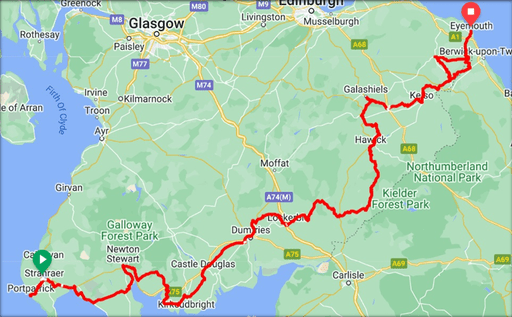Seagrass Restoration: Bids And Projects Boosting Scotland's Coast

Table of Contents
The Importance of Seagrass Restoration in Scotland
Seagrass meadows are vital for the health of Scotland's coastal ecosystems. Their restoration is crucial for both ecological and economic reasons.
Ecological Benefits
Seagrass plays a multifaceted role in the Scottish marine environment:
- Carbon Sequestration: Seagrass is incredibly effective at capturing and storing atmospheric carbon dioxide ("blue carbon"), acting as a significant carbon sink and mitigating climate change. Recent studies estimate the potential for substantial carbon sequestration through successful seagrass restoration.
- Habitat Provision: Seagrass meadows provide critical habitat for a wide array of species, including commercially important fish like cod and haddock, shellfish, crustaceans, and numerous bird species. They act as nurseries, providing shelter and food for young organisms. Increased seagrass density directly correlates with enhanced biodiversity.
- Coastal Protection: Dense seagrass beds help stabilize sediments, reducing coastal erosion and protecting shorelines from storm damage. This natural coastal defense is increasingly important in the face of rising sea levels.
- Water Quality Improvement: Seagrass filters pollutants from the water column, improving water clarity and overall water quality. This benefits both marine life and human recreational activities.
Scotland has witnessed a significant decline in seagrass cover in recent decades. Seagrass restoration projects aim to reverse this trend, restoring crucial biodiversity and the essential ecosystem services seagrass provides.
Economic Benefits
The economic advantages of seagrass restoration are significant:
- Fisheries Enhancement: Healthy seagrass meadows support thriving fish populations, benefiting the Scottish fishing industry and ensuring sustainable seafood supplies.
- Sustainable Tourism: Restored seagrass beds attract divers, kayakers, and other tourists, generating revenue for local communities and supporting the blue economy. Ecotourism initiatives focused on seagrass ecosystems are becoming increasingly popular.
- Carbon Credit Schemes: The carbon sequestration potential of seagrass offers opportunities to participate in carbon credit markets, generating revenue that can be reinvested in further restoration efforts. This provides a financial incentive for seagrass conservation.
Successful Seagrass Restoration Bids and Projects in Scotland
Several successful seagrass restoration projects are underway in Scotland, demonstrating the feasibility and effectiveness of these initiatives.
Case Study 1: The Loch Craignish Seagrass Restoration Project
Located in Argyll and Bute, this project utilized a combination of seagrass planting techniques and sediment management to restore degraded seagrass meadows. Funded by a combination of government grants and private donations, the project has shown significant success in increasing seagrass cover and biodiversity. [Link to Project Website]
Case Study 2: The Solway Firth Seagrass Restoration Initiative
This project, situated in the Solway Firth, focused on a different approach, employing innovative techniques for seagrass seed collection and dispersal. The focus was on restoring historically significant seagrass beds using locally sourced seeds and engaging local communities in the process. [Link to Project Website] – Note: Replace bracketed information with actual links when available.
Ongoing Bids and Future Projects
Numerous organizations, including Marine Scotland, various universities, and environmental NGOs, are actively pursuing funding and planning ambitious seagrass restoration projects across Scotland. These initiatives aim to expand restored seagrass habitats, enhancing biodiversity and building resilience to climate change impacts. Many are applying for significant environmental grants, aiming for large-scale seagrass planting and habitat restoration.
Challenges and Opportunities in Seagrass Restoration
While significant progress is being made, challenges remain in the pursuit of large-scale seagrass restoration.
Challenges
- Funding Limitations: Securing sufficient funding for long-term restoration projects can be difficult.
- Suitable Planting Locations: Identifying suitable sites with appropriate sediment conditions and minimal pollution is crucial.
- Pollution and Climate Change Impacts: Pollution and the effects of climate change, such as rising sea temperatures and ocean acidification, pose ongoing threats to restored seagrass beds.
- Monitoring and Evaluation Challenges: Regular monitoring and evaluation are essential to assess the success of restoration efforts and adapt strategies as needed.
Opportunities
- Technological Advancements: New technologies in seagrass planting, such as drone-based seeding, are improving efficiency and effectiveness.
- Community Involvement: Engaging local communities in restoration projects fosters stewardship and long-term sustainability.
- Partnerships: Collaboration between government agencies, research institutions, and NGOs is essential for coordinated and effective restoration efforts.
- International Collaboration: Sharing knowledge and best practices with other countries undertaking similar initiatives can accelerate progress.
Conclusion
Seagrass restoration is crucial for the health of Scotland's marine environment, providing significant ecological and economic benefits. The success of ongoing projects demonstrates the feasibility of restoring these vital habitats. However, addressing challenges related to funding, suitable locations, and the impacts of pollution and climate change are vital to ensure the long-term success of seagrass restoration efforts. By embracing innovation, collaboration, and community engagement, Scotland can lead the way in protecting and restoring its precious seagrass meadows. Learn more about seagrass restoration initiatives in Scotland and discover how you can contribute to the revitalization of our coastal ecosystems. Support seagrass restoration projects and help protect Scotland's precious marine environment. Become involved in seagrass conservation and help build a healthier future for Scotland's coastline.

Featured Posts
-
 Ufc Fight Night Expert Predictions For Sandhagen Vs Figueiredo Fight
May 04, 2025
Ufc Fight Night Expert Predictions For Sandhagen Vs Figueiredo Fight
May 04, 2025 -
 Increased Training Intensity Ajagba Vs Bakole
May 04, 2025
Increased Training Intensity Ajagba Vs Bakole
May 04, 2025 -
 Singapores Political Landscape The Upcoming Election And Its Implications
May 04, 2025
Singapores Political Landscape The Upcoming Election And Its Implications
May 04, 2025 -
 Classico Paulista Corinthians X Santos Quem As Casas De Apostas Dao Como Favorito
May 04, 2025
Classico Paulista Corinthians X Santos Quem As Casas De Apostas Dao Como Favorito
May 04, 2025 -
 Carneys Meeting With Trump The Future Of Cusma
May 04, 2025
Carneys Meeting With Trump The Future Of Cusma
May 04, 2025
